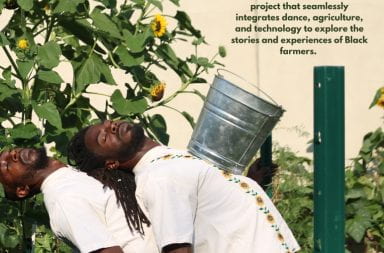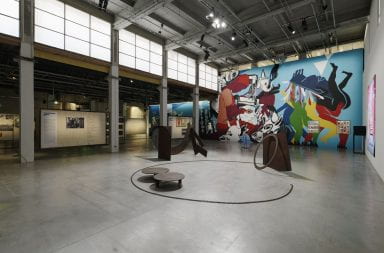
19th century hidden mother photographs from Laura Larson’s collection on display at the Wexner Center for the Arts.
Credit: Courtesy of the Collection of Laura Larson
The cliche “history repeats itself” has played out in artist Laura Larson’s life, as she found a collection of 19th century child portraits was reflective of her experience as an adoptive mother.
Larson, multimedia artist and Ohio University professor, hosted a talk on Friday at the Wexner Center for the Arts, featuring readings from her first book, “Hidden Mother,” followed by a Q and A session and a book signing.
Jennifer Lange, curator of the Film/Video Program at The Wex, said Larson’s work is characterized by its investigation of history in relation to her own life.
“Like much of (Larson’s) work, ‘Hidden Mother’ weaves together history and personal experience,” Lange said. “It’s the type of book that invites multiple readings.”
Larson said “Hidden Mother” was a project that consisted of two components: a book that chronicled the adoption of her Ethiopian daughter, Gadisse, and an accompanying collection of 19th century photographs that she curated, which will be on display at The Wex until 6 p.m. on Sunday.
She said she drew inspiration for her book from “hidden mother” portraits in which a mother was concealed by studio props while she held her child while he or she was photographed. Most frequently, the mother was physically covered with a sheet of fabric, but, alternatively, Larson said her face may have been scratched out of the print itself or covered with black paint.
Larson said the literal removal of mothers from historical photographs led her to examine the separation between mother and child.
“The implicit violence of these strategies (of removing mothers from photos) raises the question, ‘Why not photograph mothers and children together?’” Larson said.
Through the exploration of this question, Larson said the historical child portraits that punctuate “Hidden Mother” became representative of the photos that she received from the adoption agency during the seven-month long process of adopting Gadisse. She said the photos enabled her to develop a maternal desire to support her daughter, even prior to meeting her.
“Photographs streamed a virtual umbilical cord between us,” Larson said. “Like a hidden mother, I was bound to and separated from my daughter”
Alana Ryder, manager for public and university programs at The Wex, said Larson’s ability to provide a modern context for antiquated art emphasizes the timelessness of photography.
“(Larson) and others have really had the chance to excavate this whole genre of photography that hasn’t ever been looked at by a critical mass and I think it’s especially powerful at this moment to look at these narratives, these stories that, because of (historical and cultural) distance, now we’re able to see really freshly,” Ryder said.
The reexamination of material from the past through a contemporary lens unveiled similarities between the past and present nature of motherhood, Larson said. Specifically, she said “Hidden Mother” reveals the simultaneous attachment and autonomy that exists when raising a child, no matter the historical context.
“I recognized pretty quickly (upon adopting Gadisse), that’s what it means to be a mother – you’re sort of there and you’re not,” Larson said.


